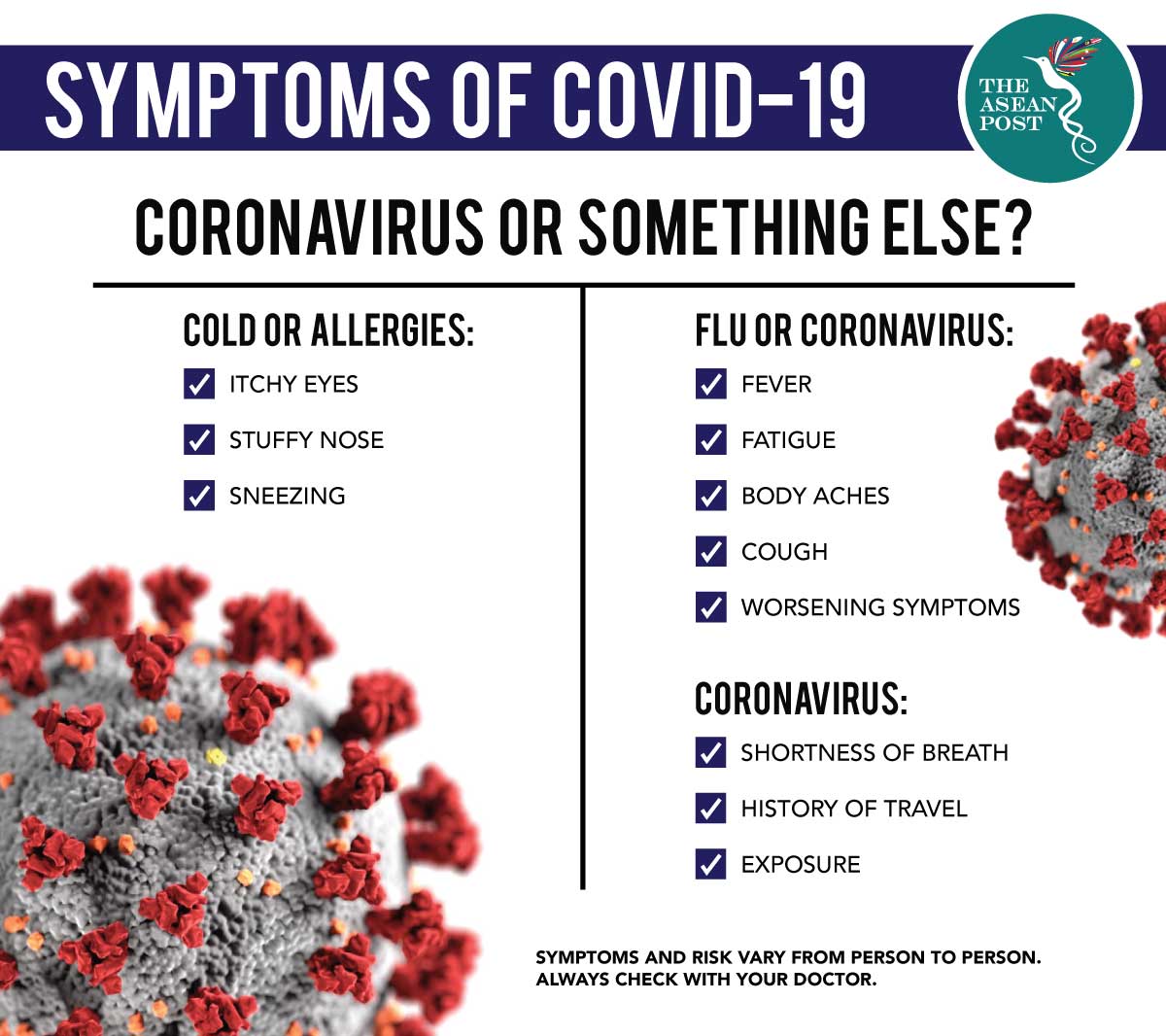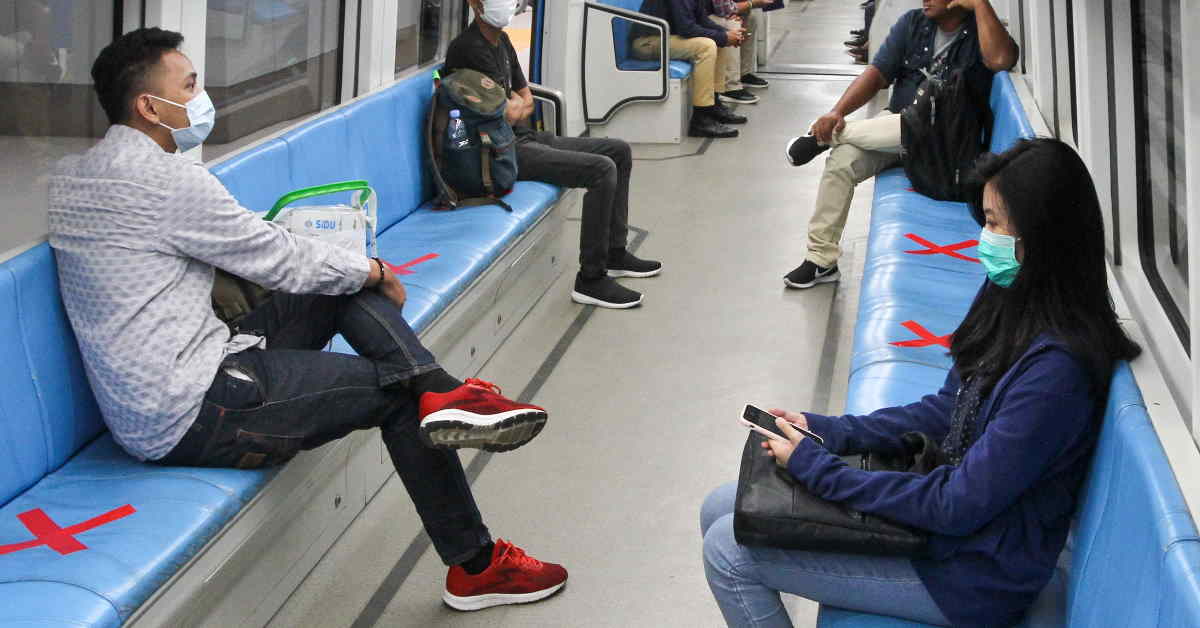As of 30 March, over 700,000 people have been infected with the new COVID-19 virus, with 8,000 confirmed cases reported across ASEAN. The virus, which first emerged from China’s central Hubei province has killed over 200 people in Southeast Asia and shows no sign of slowing down. Currently, numerous countries around the world have opted for strict measures to contain the spread of the deadly disease which include city-wide lockdowns and travel curbs.
The COVID-19 virus is said to be highly infectious, spread mainly from person to person through respiratory droplets, according to Centers for Disease Control and Prevention (CDC) in the United States (US). For example, if a person who has the disease coughs or sneezes, the droplets can land in the mouths or noses of people who are nearby and possibly be inhaled into the lungs. Despite being deadly, not everyone who is infected will present symptoms. Therefore, many cases of those who are infected without obvious signs go unreported as they fail to appear at hospitals for further testing.
Indonesia reported its first two cases of COVID-19 in early March and its first death from the disease a few days later. On 30 March, 1,414 people had been infected in the country with 122 fatalities, the highest recorded number of deaths in Southeast Asia. Despite the rather low number of confirmed cases compared to neighbouring Malaysia which has reported over 2,000 cases, researchers believe that there could be tens of thousands of hidden infections across Indonesia.
According to media reports, a study by the Centre for Mathematical Modelling of Infectious Diseases estimates that as few as two percent of Indonesia’s COVID-19 cases have been reported. This means that the true number could be as high as over 30,000 infections. However, many speculate that the numbers could be at more than half a million in a country of 273 million.
For ASEAN member states Myanmar and Lao PDR, where the first COVID-19 cases there were reported just last week, the low numbers of reported cases have invited scepticism by observers from around the world. As of 30 March, less than 10 people were officially infected in both countries.
Many claim that the reason for these seemingly low numbers of cases is simply because of limited test kits.
Indonesia’s health ministry data stated that the country which is the fourth most populous in the world has around only 321,544 hospital beds. Local media have reported incidents of the country’s slow process and poor response towards citizens showing signs of the virus.

“I told them that my father showed strong symptoms and was previously rejected by a hospital that had been appointed as a COVID-19 referral centre,” explained a son of a patient in Indonesia to the media. “I lashed out at them and threatened to make their poor response viral. They eventually agreed to an ambulance. We waited for almost three hours for the ambulance to arrive,” he continued. The father had tested positive for the coronavirus two days later and is said to be currently in treatment.
Jusuf Kalla, chairman of Indonesia’s Red Cross said that “if the tests are low, then the cases are low”, adding that the true number of cases should be revealed once the country steps up its testing.
In Myanmar, it was reported that the country currently has enough test kits to detect suspected cases, according to a World Health Organisation (WHO) official. "For now, Myanmar has some 5,000 or more test kits, which can test some 1,700 people," assured Stephan Paul Jost, the WHO representative to Myanmar.
However, according to a professor at the University of Medicine 2, in Yangon, the “ministry said no confirmed case until Monday (23 March), but it tested only about 200 suspected patients. It is not enough,” he told the media. He then stated that the reason for this is probably because the country has only one laboratory for coronavirus testing. According to local Myanmar media, the National Health laboratory in Yangon has only seven microbiologists and four testing machines.
The same situation applies for another small ASEAN country of nearly seven million people, Lao PDR. Dr Phonebadith Sangxayalath, Director of the National Center for Laboratory and Epidemiology (NCLE), Ministry of Health, stated that the country is well equipped to test for COVID-19 cases. Nevertheless, many believe that the virus is spreading among its people, but remains undetected or untested. It was reported that a doctor from Luang Prabang, a city in Lao PDR, said that “provincial hospitals do not have equipment to test people and they might only refer the worst cases to laboratories in Vientiane.”
Recently, other Southeast Asian countries such as Thailand and Malaysia have developed rapid test kits for COVID-19. With support from a few international organisations, a research team in Thailand led by VISTEC (Vidyasirimedhi Institute of Science and Technology) has developed test kits that can deliver results in under an hour.
Other than that, Malaysia has also introduced “drive-thru” COVID-19 tests which can help citizens get screened for the virus in less than 10 minutes with the results available in about 24 hours. “We are following the South Korean model to test everyone. Test, test, test – and then test again. By testing everyone, we can detect positive cases early and help minimise the spread of COVID-19”, said Dr Nur Abdul Karim, consultant emergency physician and head of Accident & Emergency Services at KPJ Damansara Hospital in the capital city of Kuala Lumpur.
The head of the WHO, Tedros Adhanom Ghebreyesus has also echoed the same sentiment with a simple message for all countries to "test, test, test".
Related articles:
